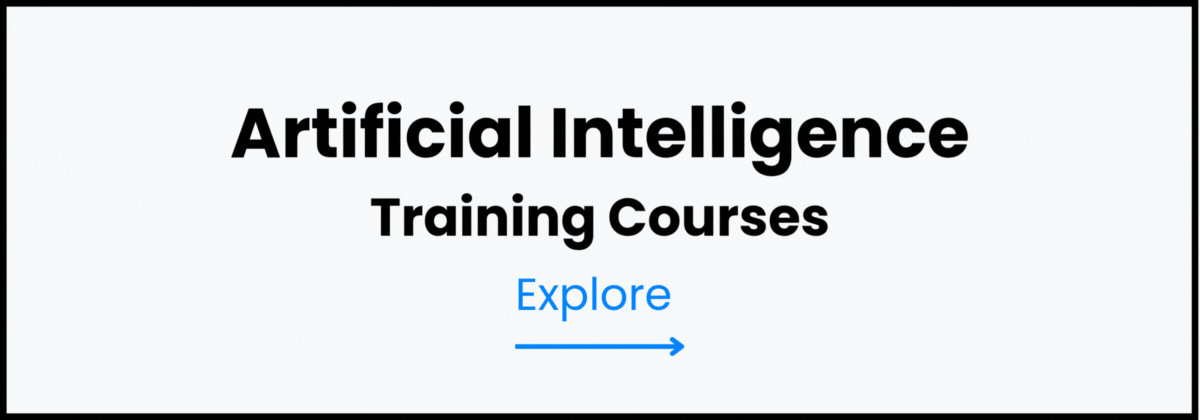Role of AI in Corporate Governance and Board Oversight
The Role of AI in Corporate Governance and Board Oversight has become a defining force in how modern organizations operate, make decisions, and ensure long-term accountability. As companies navigate increasing regulatory pressures, complex risks, and vast volumes of operational data, artificial intelligence (AI) is emerging as a strategic enabler for transparent, responsible, and faster governance processes. Boards today must understand not only the opportunities AI unlocks but also the oversight responsibilities that come with integrating intelligent systems into the organization’s core decision-making framework.
Artificial intelligence in a corporate governance context refers to advanced technologies—such as machine learning, predictive analytics, natural language processing, and automated decision engines—that support leaders in interpreting data, assessing risks, improving compliance, and strengthening internal controls. These technologies provide governance teams with deeper situational awareness, allowing them to move from reactive oversight to proactive, insight-driven governance practices.
AI is transforming governance models by bringing automation, accuracy, and predictive capabilities into areas previously dominated by manual judgment.
Some examples include:
- Automated risk detection and anomaly identification
- Real-time monitoring of compliance activities
- Predictive forecasting to anticipate governance failures
- Intelligent dashboards for decision-makers
This shift empowers boards to oversee operations with greater efficiency and confidence, ensuring that key decisions are guided by reliable, data-backed insights rather than assumptions or fragmented information.
As AI adoption accelerates, the demand for data-driven board oversight, transparent reporting, and ethical AI governance is growing. Boards must now prioritize responsible AI frameworks, ensure algorithmic fairness, and maintain accountability for automated outcomes. Organizations that embrace AI with strong oversight will gain strategic clarity, operational resilience, and a competitive advantage in an increasingly complex business environment.
How AI Is Transforming Corporate Governance
The rise of AI in GRC is reshaping the foundations of corporate governance, creating a shift from traditional, manual oversight to dynamic, technology-enabled governance systems. As organizations handle expanding regulatory obligations and increasingly complex risk environments, AI-driven tools are offering the speed, precision, and intelligence needed to keep governance frameworks robust and future-ready. This technological shift is not just operational — it is strategic, driving a new era of digital governance transformation across industries.
AI is enhancing transparency and accountability by providing real-time visibility into organizational performance, compliance activities, and emerging risks. With intelligent systems continuously monitoring data streams, boards gain access to cleaner insights, faster issue detection, and clearer evidence for decision-making. This enables oversight that is both timely and grounded in reliable information, strengthening trust between leadership teams and stakeholders.
One of the most significant advancements is governance automation, which reduces manual work, minimizes human error, and accelerates reporting cycles. Instead of relying on time-consuming spreadsheets or fragmented updates, governance teams can depend on AI-driven tools that automatically compile information, analyze trends, and highlight governance gaps that may require attention.
Examples of this transformation include:
- AI-powered dashboards that provide real-time visibility across compliance, operations, and risk metrics
- Predictive compliance analytics that forecast potential violations before they occur
- Automated board reporting that eliminates slow manual data gathering
- Intelligent risk-scoring tools that help prioritize governance actions
These innovations also elevate AI in board decision-making, allowing leadership to evaluate scenarios, assess outcomes, and plan with unprecedented clarity. Boards no longer need to wait for quarterly reviews; they can rely on always-on intelligence that helps them steer the organization with agility and control.
Overall, AI in GRC is modernizing governance systems by streamlining workflows, raising oversight standards, and empowering boards with the data-driven insights required to lead ethically, strategically, and confidently. ➡️(Artificial Intelligence AI Training Courses)
Key Areas Where AI Enhances Board Oversight
Artificial intelligence is elevating board oversight by providing deeper visibility, faster analysis, and stronger control across governance functions. Breaking these areas into focused segments helps boards understand exactly where AI delivers the greatest strategic value.
-
Risk Management and Predictive Analytics
AI-driven risk management is transforming how organizations detect, analyze, and prioritize emerging threats. By using advanced data modeling, machine learning, and pattern recognition, AI identifies anomalies and risk indicators long before they escalate into critical issues. This enhances strategic foresight and strengthens predictive governance analytics, giving board members clearer visibility into organizational vulnerabilities.
Key applications include:
- Continuous monitoring of cyber risks and intrusion attempts
- Identifying supply chain vulnerabilities caused by geopolitical or operational disruptions
- Detecting financial fraud patterns through transaction intelligence
- Forecasting risk exposure using corporate risk intelligence models
With these capabilities, boards can move from reactive oversight to proactive risk mitigation, improving resilience across the enterprise.
-
Compliance and Regulatory Monitoring
Keeping pace with evolving global regulations is a major challenge for governance teams. AI in compliance monitoring streamlines this by scanning regulatory databases, industry updates, and government portals to detect relevant changes in real time. This reduces the risk of non-compliance and supports continuous governance assurance.
AI-powered regulatory technology provides:
- Automated compliance systems that track policy updates
- Instant alerts when new rules impact operations
- Auto-generated audit trails that provide transparent documentation
- Streamlined compliance workflows for faster governance reporting
By eliminating manual tracking, boards gain accurate, up-to-date regulatory intelligence that strengthens compliance oversight.
-
Data-Driven Board Decision-Making
Boards today rely on vast sets of financial, operational, and market data. AI converts these complex datasets into actionable insights through intelligent boardroom analytics, helping leaders understand trends, evaluate risks, and make more confident decisions.
Key benefits include:
- AI in board reporting that summarizes critical information instantly
- Scenario analysis tools that simulate business outcomes
- Decision intelligence systems that guide strategic choices
- Visualization dashboards that support high-level discussions
With these capabilities, AI enhances the quality and speed of board decision-making, enabling leadership teams to govern with precision and clarity.
-
Internal Audit and Control Systems
AI-powered internal audit tools are redefining governance controls by increasing audit accuracy and reducing manual effort. Through real-time anomaly detection and continuous monitoring, AI identifies irregularities, policy breaches, and operational inefficiencies faster than traditional audit processes.
AI delivers improvements through:
- Automated detection of unusual transactions or behavior
- Continuous auditing models that run 24/7
- Intelligent governance controls for higher assurance
- Streamlined audit documentation and validation
This modernizes audit functions and ensures that governance systems remain reliable, consistent, and transparent.
-
ESG and Ethical Governance Oversight
As ESG obligations grow, boards must rely on trusted tools that can analyze complex sustainability data. AI in ESG governance accelerates this process by tracking environmental metrics, assessing social impact, and evaluating ethical practices across the supply chain.
AI enhances ESG and ethical oversight by:
- Identifying sustainability risks through predictive modeling
- Monitoring supply chain ethics using real-time data
- Supporting transparent reporting aligned with global standards
- Strengthening ethical AI oversight to ensure fairness and accountability
These capabilities help boards uphold responsible, sustainable governance while meeting stakeholder expectations and regulatory requirements.

Benefits of AI Integration in Corporate Governance
Integrating AI into governance frameworks delivers measurable advantages across transparency, decision-making, and organizational oversight. Boards that embrace AI-enabled systems gain a deeper understanding of business operations, supported by real-time data and automated intelligence that enhances the quality of strategic discussions.
One of the most significant advantages is the improvement in AI and transparency. AI tools provide instant visibility into compliance activities, financial movements, operational risks, and performance metrics. Instead of waiting for manual reports or fragmented updates, board members can rely on live dashboards that highlight trends, irregularities, and governance indicators with greater accuracy.
AI governance benefits also extend to more confident, data-backed board decisions. With predictive analytics, scenario modeling, and intelligent reporting systems, boards can evaluate potential outcomes before taking action. This reduces uncertainty and enables leadership teams to navigate regulatory, financial, and operational challenges with clarity and control.
AI-driven systems further enhance accountability and auditability. Automated logs, digital trails, and validated data points ensure that governance actions are easy to trace, review, and verify. This strengthens overall oversight while simplifying both internal and external audits.
Important Resources:
- What Is Anti-Money Laundering (AML)?
- Principle of Accountability in Corporate Governance
- What Is BRM in Corporate Strategy
- Key Steps for Successful AI Implementation
- How AI Is Changing the Recruitment Process
- How is AI Used In Enterprise Risk Management
Risks and Ethical Considerations of AI in Governance
While AI brings significant advantages, its adoption requires careful oversight to ensure that governance remains responsible and fair. Boards must balance innovation with caution, actively addressing the risks associated with advanced technologies in decision-making environments.
A critical concern is bias in AI algorithms. If underlying data is incomplete or skewed, AI-driven outputs may unintentionally reinforce discriminatory patterns. This can affect hiring decisions, risk scoring, compliance assessments, and performance evaluations. To mitigate these issues, organizations must implement rigorous validation and monitoring of AI models to ensure fairness and consistency.
Data privacy is another challenge. AI systems rely on large volumes of sensitive information, creating potential vulnerabilities if data governance controls are weak. Boards must ensure that privacy policies, encryption standards, and access controls meet regulatory expectations and protect stakeholder trust.
A further complication is the lack of explainability in AI-generated insights. Many advanced models operate as “black boxes,” making it difficult for decision-makers to understand how conclusions were reached. This lack of transparency raises questions around accountability and can undermine governance integrity.
To address these concerns, boards have an essential role in promoting AI ethics and accountability. This includes establishing oversight mechanisms, setting boundaries for acceptable AI usage, and ensuring that automated decisions align with legal and ethical standards. Many organizations are now forming AI ethics committees or integrating ethical governance frameworks to monitor risks, validate system outputs, and guide responsible deployment. ➡️Governance & Compliance Training Courses
The Board’s Role in Overseeing AI Systems
Effective governance in the age of artificial intelligence requires strong leadership, clear accountability, and a deep understanding of the technology’s strategic impact. As organizations embed AI across critical operations, the role of the board becomes central to ensuring that AI initiatives are aligned with long-term corporate goals, executed responsibly, and continuously monitored for performance and risk. This elevated responsibility defines the core of board oversight AI, reshaping how directors guide digital transformation at the enterprise level.
Boards must take an active role in evaluating new AI initiatives, assessing whether each proposal supports organizational strategy, operational efficiency, and stakeholder value. This includes reviewing the business case for AI adoption, examining potential benefits, and determining whether the technology aligns with the company’s risk appetite and governance standards. Clear criteria for evaluation help ensure that AI projects are not adopted simply for innovation’s sake, but for measurable and strategic impact.
A key priority is ongoing performance monitoring. Boards should ensure that AI systems operate as intended, consistently deliver accurate insights, and remain compliant with regulatory requirements. This involves setting performance benchmarks, reviewing periodic reporting, and validating transparency in AI operations. When governance teams have access to reliable performance metrics, board responsibility for AI becomes more structured, predictable, and effective.
AI literacy is now a fundamental requirement for modern directors. Without a working understanding of AI capabilities, limitations, and risks, boards may struggle to oversee complex systems or challenge management effectively. Building AI literacy through briefings, training courses, and expert advisory support enables directors to make informed judgments and uphold governance standards with confidence.
To guide oversight conversations, boards should routinely ask:
- How transparent is the AI decision process?
Can we clearly understand how the system arrives at its outputs? - What safeguards protect against data misuse?
Are privacy, security, and access controls robust and regularly audited? - Who is accountable for AI failures?
Is there a defined ownership structure for monitoring, reporting, and resolving AI-related issues?
These guiding questions strengthen board awareness, reduce risk, and ensure that AI systems support responsible, ethical, and effective governance.
Frequently Asked Questions (FAQs)
-
What is the role of AI in corporate governance?
AI strengthens corporate governance by enhancing oversight, decision-making quality, and organizational transparency. It helps boards monitor risks more effectively, review real-time performance data, and identify patterns that may not be visible through manual processes. By automating analysis and providing predictive insights, AI enables governance teams to act proactively rather than reactively, strengthening overall governance integrity.
-
How can boards use AI effectively?
Boards can leverage AI through data-driven reporting tools, predictive analytics dashboards, and automated monitoring systems. These technologies summarize complex information into meaningful insights, enabling clearer discussions during board meetings. AI also supports scenario planning, allowing directors to evaluate potential outcomes and make better-informed decisions based on accurate, real-time intelligence.
-
What are the risks of relying on AI for governance?
While AI is valuable, it introduces risks such as algorithmic bias, data privacy concerns, and unclear accountability when systems fail. If not properly governed, AI may produce unfair outcomes or rely on flawed data sets. Boards must establish clear oversight mechanisms to ensure transparency, validate model accuracy, and assign responsibility for monitoring and rectifying errors.
-
How does AI improve compliance and risk management?
AI enhances compliance by automating rule monitoring, scanning regulatory updates, and creating instant alerts when changes affect the organization. For risk management, AI provides early warning systems that detect anomalies, cyber threats, supply chain disruptions, and financial irregularities. These capabilities help organizations identify issues early and address them before they escalate.
-
What is AI governance, and why is it essential?
AI governance refers to the policies, frameworks, and controls that ensure AI is deployed ethically, responsibly, and in alignment with corporate values. It establishes rules for transparency, fairness, data security, and accountability. Strong AI governance is essential because it protects stakeholders, reduces regulatory risks, and ensures that AI-driven decisions are trustworthy and explainable.
-
Can AI support ESG and sustainability reporting?
Yes. AI can analyze large volumes of environmental, social, and governance (ESG) data to detect sustainability risks, evaluate supply chain ethics, and track performance against ESG targets. Automated data extraction and verification systems also improve the accuracy and transparency of sustainability reporting, helping organizations meet stakeholder expectations and global compliance standards.
-
What should boards consider before adopting AI technologies?
Boards should conduct a readiness assessment to evaluate whether the organization has the data quality, infrastructure, and skills needed to support AI. They must review policy alignment, set ethical guidelines, and establish clear oversight responsibilities. Training for directors on AI literacy is also essential to ensure informed evaluation, governance, and risk management throughout the AI adoption process.
Explore Courses From Our Top Categories:
Leadership Training Courses – Human Resources Training Courses – GRC Training Courses – Risk Management Training Courses – Finance & Budgeting Training Courses – Training Courses in Dubai





